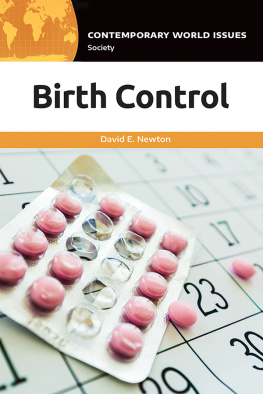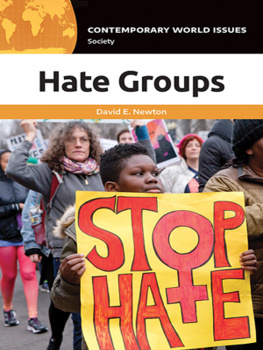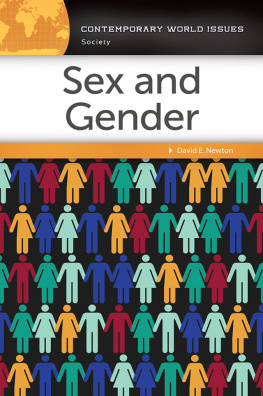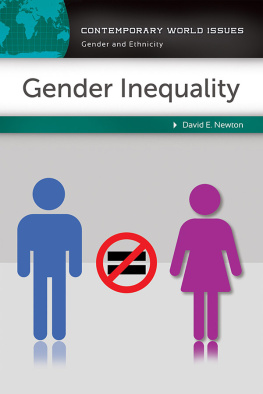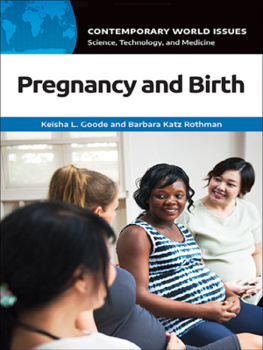Birth Control
Recent Titles in the
Contemporary World Issues
Series
The Opioid Crisis: A Reference Handbook
David E. Newton
Abortion in the United States: A Reference Handbook, second edition
Dorothy E. McBride and Jennifer L. Keys
The Youth Unemployment Crisis: A Reference Handbook
Christine G. Villegas
Transgender: A Reference Handbook
Aaron Devor and Ardel Haefele-Thomas
Eating Disorders in America: A Reference Handbook
David E. Newton
Natural Disasters: A Reference Handbook
David E. Newton
Immigration Reform: A Reference Handbook
Michael C. LeMay
Vegetarianism and Veganism: A Reference Handbook
David E. Newton
The American Congress: A Reference Handbook
Sara L. Hagedorn and Michael C. LeMay
Disability: A Reference Handbook
Michael Rembis
Gender Inequality: A Reference Handbook
David E. Newton
Media, Journalism, and Fake News: A Reference Handbook
Amy M. Damico
Bullying: A Reference Handbook
Jessie Klein
Books in the Contemporary World Issues series address vital issues in todays society such as genetic engineering, pollution, and biodiversity. Written by professional writers, scholars, and nonacademic experts, these books are authoritative, clearly written, up-to-date, and objective. They provide a good starting point for research by high school and college students, scholars, and general readers as well as by legislators, businesspeople, activists, and others.
Each book, carefully organized and easy to use, contains an overview of the subject, a detailed chronology, biographical sketches, facts and data and/or documents and other primary source material, a forum of authoritative perspective essays, annotated lists of print and nonprint resources, and an index.
Readers of books in the Contemporary World Issues series will find the information they need in order to have a better understanding of the social, political, environmental, and economic issues facing the world today.
CONTEMPORARY WORLD ISSUES
Birth Control
A REFERENCE HANDBOOK
David E. Newton

Copyright 2020 by ABC-CLIO, LLC
All rights reserved. No part of this publication may be reproduced, stored in a retrieval system, or transmitted, in any form or by any means, electronic, mechanical, photocopying, recording, or otherwise, except for the inclusion of brief quotations in a review, without prior permission in writing from the publisher.
Library of Congress Cataloging-in-Publication Data
Names: Newton, David E., author.
Title: Birth control : a reference handbook / David E. Newton.
Other titles: Contemporary world issues.
Description: Santa Barbara : ABC-CLIO, [2020] | Series: Contemporary world issues | Includes bibliographical references and index.
Identifiers: LCCN 2019045868 (print) | LCCN 2019045869 (ebook) | ISBN 9781440872846 (hardcover ; alk. paper) | ISBN 9781440872853 (ebook)
Subjects: MESH: Contraceptionhistory | Contraceptionmethods | History of Medicine | United States
Classification: LCC HQ763 (print) | LCC HQ763 (ebook) | NLM WP 11 AA1 | DDC 613.9dc23
LC record available at https://lccn.loc.gov/2019045868
LC ebook record available at https://lccn.loc.gov/2019045869
ISBN: 978-1-4408-7284-6 (print)
978-1-4408-7285-3 (ebook)
24 23 22 21 201 2 3 4 5
This book is also available as an eBook.
ABC-CLIO
An Imprint of ABC-CLIO, LLC
ABC-CLIO, LLC
147 Castilian Drive
Santa Barbara, California 93117
www.abc-clio.com
This book is printed on acid-free paper 
Manufactured in the United States of America
Contents
Sandy Becker
Kirk Brennan
Linda Heiden
Emily Hirsch
Joyce Krensky
David L. Levine
Liesl Nydegger
Marissa Quenqua
Ilka Sankari
Unplanned pregnancies are a crucial fact of life in the United States and other countries of the world today. In 2011, the year for which the most recent data are available, 45 out of every 1,000 pregnancies (an estimated 2.8 million pregnancies) in the United States were unplanned. That number means that about 5 percent of reproductive-age women in the country were having an unintended pregnancy every year. Of this number, 27 percent (out of 45 percent) were unexpected pregnancies that a women or couple had hoped for sometime later in their lives. The other 18 percent were pregnancies that were just not wanted under any circumstance. These numbers are the highest for any developed country in the world.
The rate of unplanned pregnancies was very different for various subgroups of women: five times as great among women below the poverty rate compared to those above the poverty rate; the highest for women in the age group 1519 years for any age group of women; twice as high for black women as for their white counterparts; and nearly twice as great for women without a high school diploma as for those with a diploma. Roughly half of all unintended pregnancies (42 percent, not counting miscarriages) end in abortion; the remaining 58 percent end in childbirth.
Methods are available, of course, to reduce the risk of unplanned pregnancy: contraceptives. In the United States today, 18 contraceptive devices and methods have been approved by the U.S. Food and Drug Administration for use by women and men. The efficacy of these options varies from 100 percent (abstinence, vasectomy, and tubal ligation) to about 75 percent (fertility awareness-based methods, spermicides, withdrawal, and vaginal sponge). Even with the accessibility of these devices and methods, however, a surprisingly low number of reproductive-age women (and their partners)about 62 percentactually make use of contraception during their reproductive lives.
For a variety of reasons, young adults are especially at risk for unintended pregnancies. They may not be well informed about birth control; are discouraged by parents, friends, or others from using the most effective means of contraception; or do not have easy access to contraceptive devices. Sex education that includes information about contraception is now available in a large fraction of American schools. But those programs may emphasize only one form of contraception (abstinence) or skip over the topic entirely. For a variety of reasons, then, adolescents are more limited in their access to contraception than are women and men of almost any age.
This book is designed to help remedy that situation. It provides factual information about contraception, along with a variety of tools with which readers can learn more about the topic. focuses on basic issues, such as history and the nature of contraceptives themselves: how they work and how effective they are likely to be. Humans have been concerned about contraception throughout history. In the earliest days, women and men invented devices and methods that now seem more than primitive; they were sometimes harmful and even life threatening. In fact, it was not until the early 20th century that even the simplest effective contraceptive devices had been developed and brought to the marketplace. The invention of the pill in the late 1960s, for example, not only changed the nation and the worlds birth control practices but also revolutionized the role of women in society.

